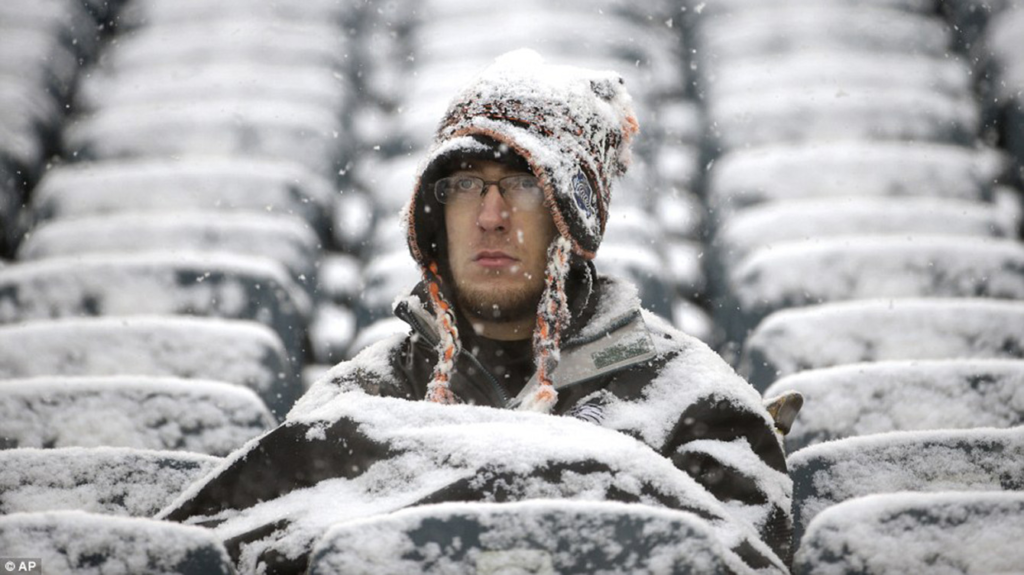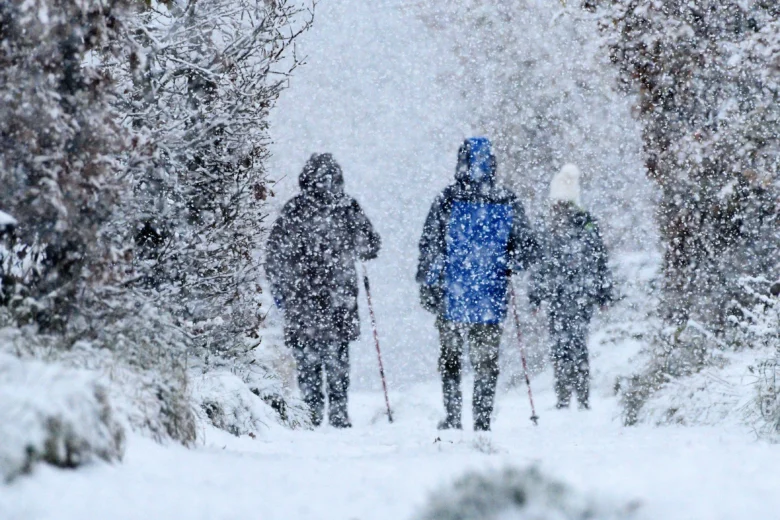Wintertime brings a magical transformation to the world, as snowflakes gently descend from the heavens, creating a serene and picturesque landscape. One of the most enchanting phenomena during winter is the snow flurry, a light and swirling display of snow that, while not as intense as a full snowstorm, can still capture the awe of onlookers and leave an indelible impression of the season. Whether it’s a soft scattering of snowflakes across a quiet town or a flurry that dances in the wind and forms a veil over the landscape, a snow flurry is a beautiful and fleeting natural event that showcases the delicate and ephemeral nature of winter weather.
In this article, we will explore the meaning and characteristics of a snow flurry, how it differs from other snow events, and the science behind its occurrence. Additionally, we’ll look at how snow flurries influence our daily lives, the environment, and even how they are represented in art and culture.
What is a Snow Flurry?
A snow flurry is a light, short-lived snowfall characterized by small, soft snowflakes that are carried by the wind, often in a swirling or drifting motion. Unlike heavy snowstorms, snow flurries are usually brief and do not result in significant accumulation on the ground. Snow flurries are often marked by a gentle or moderate wind that causes the snowflakes to scatter and swirl through the air. These flakes are typically lighter in weight and smaller in size compared to the larger, more defined snowflakes that may fall during a heavier snowfall or blizzard.
The snow flurry’s most defining feature is its transient nature. A flurry may last only for a few minutes or hours before it stops, leaving the sky clear once again. This makes snow flurries a somewhat elusive phenomenon that can surprise people with brief bursts of snowy beauty.
While snow flurries may not result in dangerous driving conditions or snow-covered streets, they are still a distinctive part of winter weather. They are often seen as a sign of the season’s ongoing chill, and for many, snow flurries evoke a sense of tranquility and peace as they fall from the sky.
Snow Flurry vs. Snow Storm vs. Blizzard
To better understand snow flurries, it’s helpful to compare them with other types of snow events that occur during winter:
- Snowstorm: A snowstorm is a heavier and more sustained snowfall, often accompanied by strong winds and lower visibility. Snowstorms can result in significant accumulation on the ground and may last for several hours or even days. Unlike snow flurries, snowstorms can disrupt travel, cause power outages, and lead to hazardous conditions.
- Blizzard: A blizzard is a severe snowstorm with intense snowfall, very strong winds, and dangerously low visibility. A blizzard must meet specific criteria: winds of at least 35 miles per hour, snow falling or blowing at a rate of 1/4 mile visibility or less for at least three hours. Blizzard conditions can lead to whiteouts and are highly dangerous for travelers and residents. Snow flurries, on the other hand, are far less intense and usually do not cause significant visibility problems or hazardous conditions.
- Snow Flurry: In contrast to both snowstorms and blizzards, snow flurries are light, brief, and do not result in substantial accumulation. While they still signify the presence of winter, they are generally not considered a serious weather event in terms of their impact on daily life. Snow flurries are often seen as a lighter, more peaceful version of snowfall, adding beauty to the surroundings without causing significant disruptions.
How Do Snow Flurries Form?
Snow flurries, like other types of snow, form when moisture in the atmosphere freezes into tiny ice crystals. These ice crystals then group together to form snowflakes, which fall to the ground when they are heavy enough. However, the process that leads to the formation of snow flurries is slightly different from heavier snowstorms due to the atmospheric conditions at play.
The primary factors that contribute to snow flurries are:
- Temperature: For snow to form, the temperature must be below freezing (32°F or 0°C). However, snow flurries often form when the temperature is just at or slightly below freezing, which means the snowflakes may be small and light, unable to accumulate heavily.
- Moisture Content: A snow flurry is more likely to occur when there is enough moisture in the atmosphere, but not in large quantities. The moisture condenses in the air and freezes into snowflakes as it rises and cools. Because the conditions are not conducive to heavy snowfall, the snowflakes remain small and light, resulting in the brief flurries we see.
- Wind: Wind plays a crucial role in the development of snow flurries. Wind causes the snowflakes to become airborne, swirling them in different directions and allowing them to scatter across the landscape. This movement in the air can make the snow appear as though it’s falling in a flurry, even if it’s not accumulating on the ground.
- Atmospheric Instability: Snow flurries are more likely to occur in unstable atmospheric conditions, where air masses are rapidly rising and cooling. This can lead to brief, isolated flurries, as opposed to the more sustained snowfall seen in a snowstorm.
Snow Flurries and Their Impact on Daily Life
Although snow flurries don’t cause significant disruptions to daily life like blizzards or snowstorms, they can still influence the atmosphere and the way people experience winter. Snow flurries can change the mood of a winter day, often creating a calm, peaceful atmosphere that encourages people to take notice of the beauty around them. For some, the sight of a snow flurry can evoke nostalgia or create a sense of wonder, especially if the flurry is accompanied by a quiet, still landscape.
On the other hand, even light snow flurries can have a minor impact on daily activities, such as driving. While they don’t typically create dangerous road conditions, a light dusting of snow can make roads slippery, particularly in areas where snow is not frequently encountered. Drivers may need to adjust their speed and driving habits to accommodate the reduced visibility and traction caused by the snowflakes.
In urban areas, snow flurries often add to the winter ambiance, making city streets appear more picturesque. Snowflakes gently accumulating on trees, rooftops, and sidewalks can transform an ordinary scene into something magical. People might stop to admire the beauty of the falling snow, creating a sense of connection to nature, even in the midst of a busy city.
Snow Flurries in Art and Culture

The delicate and fleeting nature of snow flurries has inspired countless artists, poets, and writers throughout history. Snowflakes have long been a symbol of beauty, purity, and transformation. In art, snow flurries are often depicted as a serene and ethereal phenomenon that represents the transient nature of life. They evoke feelings of calmness, nostalgia, and a sense of quietude that many associate with the winter season.
In literature and poetry, snow flurries are frequently used as a metaphor for fleeting moments, the passage of time, and the beauty of nature. Writers and poets capture the essence of snow flurries through their descriptive language, often using the lightness and impermanence of snow to explore deeper themes of change and impermanence.
Moreover, snow flurries have made their way into popular culture, often appearing in holiday decorations, winter-themed films, and seasonal songs. The sight of snow falling gently from the sky can be a reminder of the quiet beauty of the world around us, even in the coldest and most barren seasons.
Conclusion
A snow flurry is a delicate and beautiful winter event that brings a touch of magic to the world. Though brief and light, snow flurries have the power to transform the landscape, creating a sense of serenity and wonder. These gentle, swirling snowflakes are a reminder of the natural beauty of the winter season and offer a contrast to the heavier, more intense snowstorms and blizzards that can disrupt our daily lives. Whether you’re experiencing a fleeting snow flurry in a quiet rural town or witnessing the flurry dance through the streets of a bustling city, the snow flurry is a seasonal delight that continues to captivate and inspire people of all ages.

